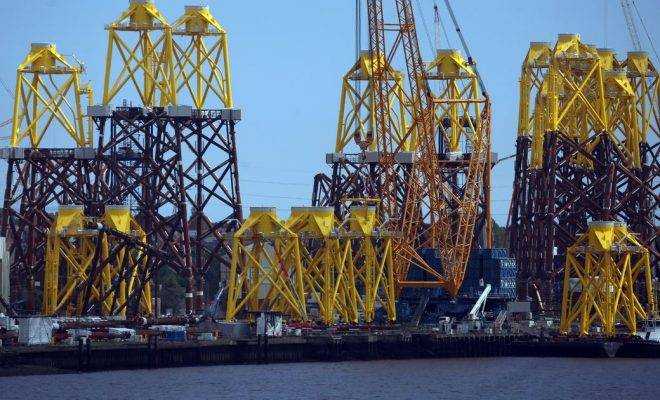Jobs in offshore energy sector could exceed 200,000, new report says

[ad_1]
The number of workers in a key growth area in the Northeast could increase to 220,000 by the end of this decade, according to a new report.
The offshore energy sector report also found that in order for the UK to meet its target of producing 40 gigawatts of power from offshore wind by 2030, 2,500 new wind turbines would need to be installed. here there – the equivalent of a new turbine every day of the week. for the next nine years.
The figures were revealed in a new review of the UK’s offshore energy sector by experts at Robert Gordon University in Aberdeen.
In addition to predicting a possible increase in the workforce, he suggested that roles in “carbon-free energies†– such as offshore wind and carbon capture use and storage (CCUS) – would shift. from one fifth of jobs currently to almost two thirds (65%) by 2030.
With around 160,000 people currently employed directly and indirectly in the UK offshore energy sector, the report predicted this could reach 200,000 or even 220,000 at best over the period.
The report explains how around £ 170bn could be invested in capital and operating activities in the UK’s offshore energy sector between 2021 and 2030 – with this factoring in for oil and gas spending , offshore wind, CCUS and hydrogen.
But he warned that “reduced ambition, combined with a lower level of activity and an accelerated decline in the oil and gas industry” could push the sector’s workforce to 140,000 by now. 2030.
Lead author Professor Paul de Leeuw said: “This review highlights the material price for the UK. The successful realization of the energy transition ambitions of the UK and devolved governments has the opportunity to secure around 200,000 jobs by 2030 for the offshore energy workforce.
‘With the total number of jobs in the UK oil and gas industry to decline over time, the degree of portability of jobs to adjacent energy sectors such as offshore wind, carbon capture and storage, l he hydrogen or other industrial sectors will be essential to ensure the UK retains its world-class skills and capabilities. “
The North East is one of the regions expected to benefit from the offshore energy boom, and it was named two years ago as one of four UK regions to lead the Government Partnership for the growth of offshore wind power.
Hundreds of jobs will be created by the decision to locate the maintenance base of the huge Dogger Bank wind farm at the port of Tyne, while the port of Blyth and areas of Teesside are also experiencing lucrative renewable energy developments. .
Last week an Anglo-American energy company said it wanted to set up a £ 200million plant on the northeast coast to make cables for wind farms feeding the UK from the Atlantic North.
[ad_2]
